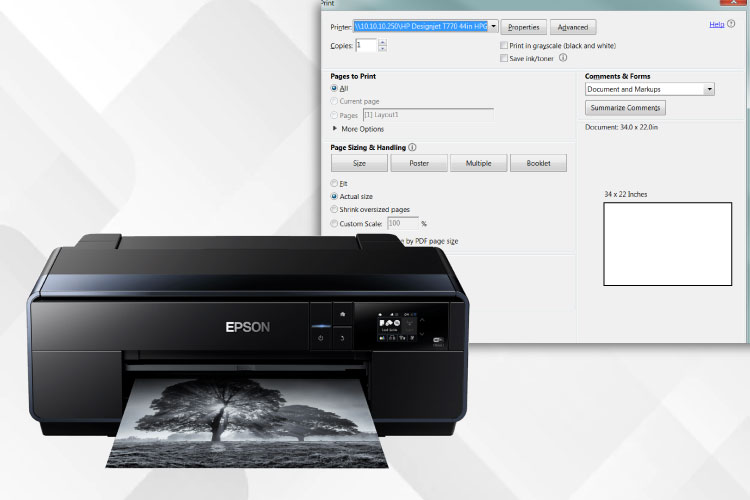Last Updated on January 3, 2022 by Lilian Brooker

Printheads clog as nozzles get blocked. Knowing the reasons for clogged printheads can also help you do the necessary things to keep them from happening. If this happens, your printer won’t print whatever you send to it.
Table of Contents
Printhead Cleaning Cycles
Check nozzles and run printhead cleaning cycles with the menu on the printer before opening the device and cleaning it manually.
Epson® printer models have a quite efficient cleaning cycle, which will often clear out nozzles in a cycle or two. Keep in mind that newer model printers feature longer cycles that use more ink each time you do it. Here is the way to get started with this.
- Before doing anything else, ensure the printer is not showing errors on its LCD screen.
- Then, hit the Home button, choose Setup and select Maintenance.
- Choose Printhead Nozzle Check
- The device will present a page with colored grids that are designed to show which nozzles are not blocked and which ones are.
- If there are no gaps, then select Done.
- However, if a few lines are faint or there are gaps, then choose Clean the printhead option and proceed.
Do not turn off the printer in the course of a cleaning cycle, or else it can cause damage to the device.
When you run a cleaning cycle, you have to take a test print to check the print quality. If you run it twice or thrice, and if the quality thereof has not improved, then let it rest for many hours, as recommended by Epson®. Then, go through a cycle again and check to see if this makes the quality better.
Here are some ways to manually clean the printhead. These are common methods which work on the majority of Epson® inkjet models.
Clean Sponges of Your Printer with Distilled Water
- Turn your printer off and open its top. Inside the unit, you should see the printhead assembly.
- When it is not printing, a plastic lever in the printer will pop up. Search for that lever, to the left side of the assembly. Once you spot it, move the lever forward and down in order to release your printhead, and push the printhead assembly to the right side. It may move only an inch or thereabouts initially, but when pushed to a stop position, it clicks. This then releases the printhead assembly, and then you can push the assembly to the side.
- You should then see sponges, storing ink from cartridges in the printhead carriage. With a plastic syringe or an eyedropper, saturate sponges preferably with distilled water.
- Move the printhead assembly back over sponges.
- Allow the distilled water to set for a minimum of 15 minutes. Think about letting your printer soak overnight for the best possible results.
- Print around eight pages with dense images and text until your printouts come out crisp and clean. If you are not getting fine results, then think about proceeding to the subsequent step in the printhead cleaning process.
Distilled Water in the Ink Port

- Detach the cartridges from the carriage.
- With cartridges detached, you will see cone-shaped indents that take ink from the former to the printhead. Those are ink ports, and the device should have one port for each black/color cartridge.
- With an eyedropper or syringe, put two drops of the water into the port which may be plugged.
- Replace the cartridges; wait for the device to set up your new ones. If water dripped from its printhead, then wipe it up using a paper towel.
- Once you are done with that, print about eight pages of images and text to check clarity. If you are not getting good results even then, try the next method.
Clean the Printhead with the Paper Towel
- Turn off your printer
- Tear one sheet of the towel in half, then fold it along the length until it is around one-half inch wide.
- Then, open the top portion of the printer, and search for a roller transporting the paper via the system where its printhead runs over while printing.
- Fix the towel to the printer roller using tape and apply many drops of distilled water around the center of the paper item.
- Move the assembly over the towel and allow it to rest for 15 minutes at the least. Allow adequate time for the ink upon the printhead to start to dissolve. Eventually, you will spot a pool of ink on the towel – this is a combination of multiple colors.
- Repeat with the new damp paper items until you begin to see separate colors from each port. You might just have to repeat the procedure many times to get good results.
- Finally, put the assembly back in its place, and turn on your printer.
- Print many pages to ensure each of the ink ports are cleared.




